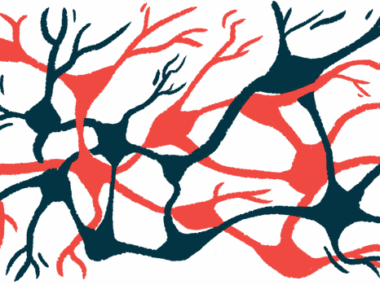Iron-fueled death of cells may drive Rett syndrome damage: Study
Findings could open up new therapeutic avenues for condition
Written by |

Ferroptosis, a form of cell death marked by the accumulation of iron, may contribute to cellular dysfunction in Rett syndrome, according to a study.
Cells from Rett patients exhibited hallmarks of ferroptosis, including oxidative damage to lipids, or fats, and abnormal mitochondria, the cell’s powerhouses. Incubation with a ferroptosis blocker rescued these deficits.
These findings “represent a promising future approach to modulate typical RTT [Rett] biochemical abnormalities, potentially improving clinical manifestations and the quality of life for patients,” researchers wrote.
The study, “Lipid peroxidation-induced cell death in Rett syndrome,” was published in the journal Free Radical Biology and Medicine.
Cells from Rett syndrome patients exhibit several signs of ferroptosis
Rett syndrome is chiefly caused by mutations in the MECP2 gene, which contains the instructions for producing the MeCP2 protein. This protein is essential for regulating the activity of other genes and plays a vital role in brain development.
Research suggests that inflammation and oxidative stress, an imbalance between harmful oxygen molecules and the body’s ability to neutralize them, may contribute to Rett development. In fact, a link between MECP2 protein dysfunction, oxidative stress, and abnormal immune system responses creates a harmful cycle in Rett known as oxinflammation.
Scientists have also begun studying a type of cell death known as ferroptosis, characterized by iron-dependent oxidative stress and depletion of certain fatty acids in cell membranes.
Cells from Rett patients exhibit several signs of ferroptosis, including increased iron levels, high oxidative stress, and lower activity of antioxidant enzymes. This prompted a team of researchers in the U.S. and Italy to better assess the role of ferroptosis in Rett syndrome.
To achieve this, they used cells called fibroblasts, collected from the skin of four girls and women with Rett, as well as from healthy girls who served as controls.
They first assessed the cells’ susceptibility to die when exposed to two chemicals that trigger ferroptosis, erastin and RSL3. Both chemicals led to an increase in the death of control and Rett fibroblasts. At lower concentrations, Rett fibroblasts showed a statistically significant increase in cell death compared to control cells.
Use of ferrostatin-1, a ferroptosis inhibitor, prevented the increased toxicity in cells, confirming that cell death in response to erastin and RSL3 was due to ferroptosis, the team noted.
Rett fibroblasts showed significantly elevated levels of damaged lipids
When compared with control cells, Rett fibroblasts showed significantly elevated levels of damaged, or oxidized, lipids. This was maintained following administration of both erastin and RSL3.
Levels of two enzymes involved in fatty acid oxidation and ferroptosis, ALOX15 and ALOX5, were elevated in Rett cells, supporting their role in the heightened cell damage observed in Rett syndrome.
As mitochondria are involved in ferroptosis, the team then assessed whether their shape was altered. Imaging analysis revealed abnormal mitochondrial shape and structure in Rett fibroblasts, as well as increased local production of reactive oxygen species (ROS) that cause oxidative stress both before and after inducing ferroptosis. Co-treatment with ferrostatin-1 prevented this ROS increase.
Our results reveal a general dysregulation in RTT cells contributing to increased ferroptosis sensitivity. This suggests a significant role for ferroptosis in RTT pathophysiology [disease processes] and progression, potentially opening new therapeutic avenues for this condition.
Fibroblasts also exhibited higher levels of the protein NCOA4, indicating increased sensitivity to ferroptosis-related cell death.
The study then examined the interaction between two transcription factors, or proteins that regulate gene activity in the cell nucleus: the antioxidant NRF2 and its inhibitor BACH1, which are critical for cellular oxidative defense.
The analysis confirmed the presence of both factors in the cell nucleus, more so in Rett cells. According to the researchers, the persistent nuclear localization of BACH1 may hinder the antioxidant effects of NRF2.
Overall, “our results reveal a general dysregulation in RTT cells contributing to increased ferroptosis sensitivity. This suggests a significant role for ferroptosis in RTT pathophysiology [disease processes] and progression, potentially opening new therapeutic avenues for this condition,” the researchers concluded.







